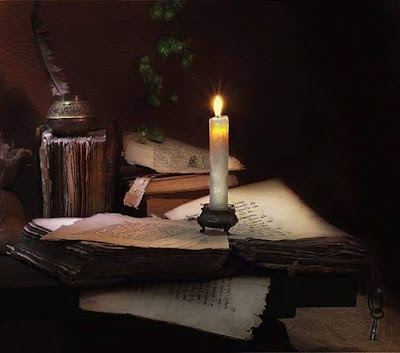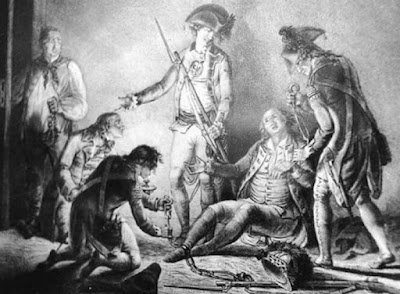The past few posts involved discussions of spycraft – general methodologies of intelligence activity. Though roughly synonymous with tradecraft, it is broader in scope than this post. Merriam-Webster defines tradecraft as “the techniques and procedures of espionage.” We will focus on selected techniques for this discussion. None are unique to the time of the Yankee Doodle Spies.
World’s Oldest Profession?
Spying has existed long into antiquity. By the mid-19th century, almost all nations employed tradecraft in their intelligence activities. Formally organized intelligence services operated in the European capitals, especially in the major ones such as Paris, London, and Madrid. But on the battlefields of America, most intelligence activities were ad hoc and usually managed by the commander in loco.
General Washington famously took a particular interest in such matters, but nearly all commanders on both sides did as well – dispatching scouts, reconnaissance patrols, and spies. Some appointed officers to manage spy networks made up of one or more agents, sometimes called assets. Benjamin Tallmadge, a major of the Second Continental Dragoons, was one such handler who ran the Culper Ring in New York City and Long Island. During the Philadelphia campaign in late 1777, Washington’s agent handler was another Continental Army officer, Major John Clark.
Cover
The complexity of today’s high-tech and interconnected world makes cover activities extremely challenging. In the 18th century, when records were not well kept or even existent, a simple “legend” might prove sufficient to protect a spy. A legend refers to a person using a fake identity or credible story to infiltrate a target organization instead of recruiting an agent in place (behind enemy lines). Nathan Hale went behind British lines in New York in 1776 using a traveling schoolmaster as his cover. Both sides used very light cover, primarily by adopting pseudonyms. Records were crudely maintained and identified, other than letters of introduction.
In 1778, American Captain Allan McLane volunteered to spy on the British garrison at Stony Point, a fort on the Hudson south of West Point. McClane dressed as a “country bumpkin” whose cover was that he was escorting a lady to visit her son at the fort. He returned safely with valuable intelligence for General Washington.
Real or Concealed?
Fans of James Bond and other modern spy thrillers are familiar with concealment devices to hide artifacts of espionage, messages, plans, or maps. These include devices such as hollowed-out coins, books, or other items. Revolutionary War devices could be elementary, as manifested by British Major John Andre’s squirreling away plans for West Point’s defense in his shoe.
A more sophisticated plot by General Henry Clinton failed in 1777 when he dispatched an officer named Daniel Taylor up the North (Hudson) River to inform General John Burgoyne of his plans. The message, written on silk, was hidden in a silver ball made to look like a musket ball. The unlucky Taylor was captured, and he swallowed the ball during questioning. His interrogators caught him in the act, and the application of emetics soon revealed the device.
Broadcasting
In the 20th century, spies might be equipped with a one-way voice link, a radio-based communication used to communicate with agents in the field typically (but not exclusively) using shortwave radio frequencies. Newspapers provided a similar capability in the 18th century. Classified ads were an advantageous way of communicating. Newspapers such as New York City’s Rivington’s Gazette served this purpose for the British and Americans.
Cryptography
The use of special techniques for secure communication dates back to antiquity. By the time of the Yankee Doodle Spies, codes and ciphers of various kinds were employed.
Letters of the alphabet replace other letters to hide the message's contents. The sender and receiver must have the same key, which can be used more than once, or for the most enhanced security, a one-time pad, which changes the key with each message. In some cases, a network might have its own template in the form of a book to provide the cipher’s key.
General Washington used a number and letter substitution system made famous by the Culper Ring operating in New York and Long Island. For instance, 38 meant attack, 192 meant fort. New York was 727, etc. Sometimes innocuous words were left in the message, as they could not reveal their true meaning.
Another secret communication method was working off a published book or dictionary, pointing to a word on a page and line to decode the signal. A popular book or dictionary essentially hides in plain sight and poses no threat if it falls into the wrong hands.
Steganography
The art or practice of concealing a message, image, or file within another message, image, or file is a high-tech endeavor today. But 18th-century intelligence often used hidden messages. Usually, a real message was embedded in a book, newspaper, letter, or some other cover text.
The British used the technique of crafting letters within the text in which the secret message was revealed when a paper template called a “mask” was applied. Within the template, the actual words of the message could be read. The information was written in the shape of an hourglass.
Invisible ink grew in use. Lemon juice provided the earliest application, but later on, a special liquid called stain enabled secret writing to be made visible only to the recipient who possessed the stain. Sir James Jay, the brother of the Revolutionary leader and head of New York’s Committee for the Detection of Spies, John Jay, invented it in London. Fortunately for the Americans, Sir James secretly shipped a bottle of stain to his brother, who ran counterintelligence activities. Washington made good use of this new “high-tech” ink, usually penned in the open space between the lines of a routine letter or a book.
Cutouts
Espionage services used cutouts, typically someone not under suspicion, to pass information to and from agents. Cutouts have limited knowledge of the final destination or the spy’s identity, providing added security should the cutout fall under suspicion. Colonial taverns and coffee houses offered ideal venues for this. Other establishments, such as American spy Hercules Mulligan’s tailor shop in New York, may have played such a role.
Dead Drop
The dead drop exchange is still a method of espionage tradecraft used to pass items between two individuals using a secret location. Dead drops permit the exchange of information while avoiding a personal meeting. These are usually secret locations at remote sites (sometimes in plain sight )for leaving notes or items for later recovery. The Culper Ring used a box buried on AbrahamWoodhaull’s farm, where Austin Roe would deliver intelligence gained at his New York tavern.
The flip side is the “live drop,” where two agents meet to exchange items or information. The same ring used Long Island’s north shore coves as dead drops where Caleb Brewster’s whaleboat could slip in, and he would retrieve the messages.
Eavesdropping
Today this includes electronic surveillance, wiretaps, and cyber collection. During Revolutionary War times, eavesdropping was secretly listening to the conversation of others without their consent, typically just out of sight or behind closed doors. Lydia Darragh got wind of a British plan for s surprise attack on General Washington’s army, which was “observing” the British garrison in Philadelphia. General Howe was using her home as his headquarters, and her presence gave her the access needed to accomplish this.
Surveillance
Monitoring behavior, activities, or anomalies is a simple but effective technique. Surveillance was possibly the most often used collection activity during the American Revolution. The pro-British Loyalists and American patriots were often intermixed and kept tabs on each other, watching for suspicious or threatening activities. Scouts and patrols also surveilled enemy forces, always from afar. In 1775, Paul Revere’s spy network, known as the Mechanics, had surveillants throughout Boston and the surrounding area to report on British activities.
Front Organizations
These are entities created and controlled by another organization, such as intelligence agencies. The intent is to avoid attribution to the organizing entity – plausible denial. They can be in the form of a business, a foundation, or another organization. The most famous of these during the Revolutionary War was Rodrigue & Hortalez et. cie, a front company established by Pierre Augustine de Beamarchais, a clockmaker and playwright, who had the ear of the King, as well as France’s Foreign Minister, comte de Vergennes. This trading company shipped surplus French military goods and other critical supplies to the colonies in exchange for American products such as tobacco. The American cause would have likely collapsed without this covert aid.
Ask Me Anything
Both sides used military interrogation extensively. An interrogation is an interviewing approach employed by police, military, and intelligence agencies to elicit valuable information from an uncooperative suspect. Interrogation involved various techniques, ranging from developing a rapport with the subject to repeated questions, sleep deprivation, or, in some countries, torture. Both sides suffered from deserters who willingly gave up military information during the Revolutionary War. The most ruthless interrogations occurred in the internecine conflict between patriots and Loyalists. This civil war within the American War for Independence was rife with aggressive and brutal interrogation of prisoners.
Black Chamber Operations
Intercepting diplomatic correspondence originated in Europe in the early 18th century, usually by co-opting a post office. During the American Revolution, both sides employed such covert actions by intercepting mail carried by normal postal means, express riders, or couriers. This was done secretly when possible, with the letter(s) carefully re-sealed and stamped. Washington and the British in New York City used this approach extensively, co-opting couriers and messengers. Since patriots and Loyalists abounded and lived among each other, there was no shortage of people who could be convinced to reengage in such a risky endeavor.
During the onset of the Yorkton campaign in 1781, General Washington exploited the use of intercepted messages by British General Henry Clinton’s New York garrison by planting false information that was allowed to fall into enemy hands. The report helped paint a false story – an upcoming invasion of New York. This operation enabled the French and Americans to steal a march on Clinton as they headed south to Yorktown and victory.

Surveilling Yorktown















.jpg)
.jpg)

